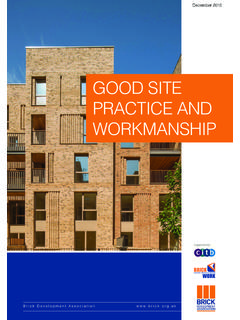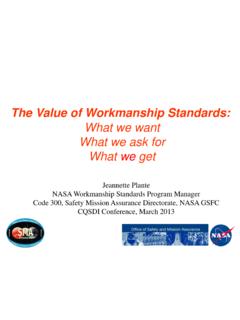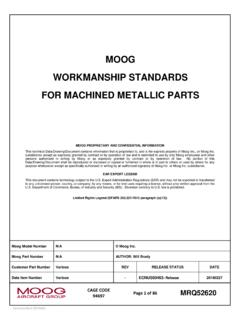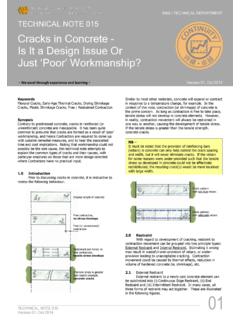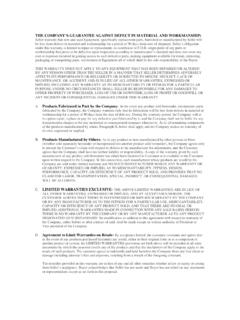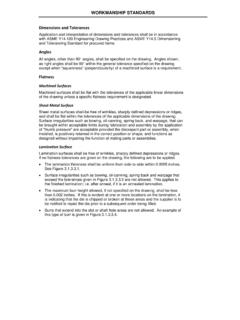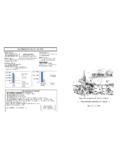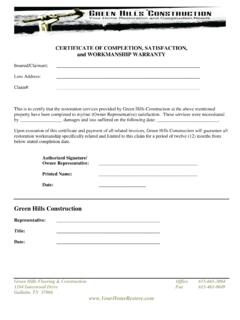Transcription of Standard for Good Workmanship in Electrical …
1 A n A m e r i cAn nAti o nAl S tAndArdNECA 1-2010 Standard forGood Workmanshipin Electrical ConstructionPublished byNational Electrical Contractors AssociationStandard forGood Workmanshipin Electrical ConstructionNECA 1-2010An AmericanNational Standard (Reaffirmation) Published byNational ElectricalContractors AssociationNOTICE OF COPYRIGHTT hisdocumentiscopyrightedbyNECAR eproduction of these documents either in hard copy or soft (including posting on the web) is prohibitedwithout copyright permission. For copyright permission to reproduce portions of this document, pleasecontact NECA Standards & Safety at (301) 657-3110 ext. 549, or send a fax to (301) Electrical Contractors Association3 Bethesda Metro Center, Suite 1100 Bethesda, Maryland 20814(301) 657-3110 Organizations may obtain permission to reproduce a limited number of copies by entering into a licenseagreement.
2 For information, contact:IHS15 Iverness Way EastEnglewood, CO 80112-5704 or call1-800-854-7179 (USA and Canada)(303) 397-7956 (International) iii Foreword ..v1. Scope .. Regulatory and Other Requirements ..12. Receiving, Storing and Protecting .. Receiving Material on Site .. Storage and Protection ..23. General Requirements ..34. Anchors and Fasteners ..45. Hangers and Supports ..56. Outlet Boxes ..77. Junction and Pull Boxes ..88. Raceways ..99. Wire and Cable ..1410. Equipment Mounting ..1611. Mounting Heights .. Recommended Outlet Mounting Heights .. Heights of Disconnect Switches, Protective Devices, Controllers, etc.. Panelboards ..19 Annex A: Reference Standards ..20 Table of ContentsNECA 1 Standard for good Workmanship in Electrical construction iiRevision HistoryNECA 1-200003/2000 NECA 1-200608/2006 NECA 1-2010 (Reaffirmation)01/2011iii National Electrical Installation Standards (NEIS )aredesigned to improve communication among speci-fiers, purchasers, and suppliers of Electrical construc-tion services.
3 They define a minimum baseline ofquality and Workmanship for installing Electrical prod-ucts and intended to be referencedin contract documents for Electrical construction pro-jects. The following language is recommended:General work practices for Electrical constructionshall be in accordance with NECA 1-2010,Standardfor good Workmanship in Electrical construction (ANSI).Use ofNEISis voluntary, and the National ElectricalContractors Association (NECA) assumes no obliga-tion or liability to users of this publication. Existenceof a Standard shall not preclude any member or nonmember of NECA from specifying or using alternateconstruction methods permitted by applicable publication is intended to comply with the edi-tion of the National Electrical Code (NEC) in effectat the time of publication. Because they are qualitystandards,NEISmay in some instances go beyondthe minimum safety requirements of the NEC.
4 It isthe responsibility of users of this publication to com-ply with state and local Electrical codes wheninstalling Electrical products and for revisions and improvements to thisstandard are welcome. They should be addressed to:NECA Standards & Safety3 Bethesda Metro Center, Suite 1100 Bethesda, MD 20814(301) 657-3110(301) 215 4500 purchaseNEIS, contact the NECA Order Desk at(301) 215 4504 tel, (301) 215-4500 fax, also be purchased in .pdfdownload format 2010, National Electrical ContractorsAssociation. All rights reserved. Unauthorized repro-duction Electrical Installation Standards, NEIS,andtheNEIS logo are trademarks of the NationalElectrical Contractors Association. National ElectricalCode and NEC are registered trademarks of theNational Fire Protection and illustrations courtesy of the InternationalAssociation of Electrical Inspectors (IAEI).
5 Foreword(This foreword is not a part of the Standard )<This page intentionally left blank>1 This Standard describes what is meant by installingequipment in a neat and workmanlike manner asrequired by the National Electrical Code, Regulatory and Other Requirementsa) All information in this publication is intended toconform to the National Electrical Code(ANSI/NFPA 70). Installers should always follow theNEC, applicable state and local codes, manufacturer sinstructions, and contract documents doing ) Only qualified persons familiar with the construc-tion and installation should perform the workdescribed in this publication. It is recommended thatall work be performed in accordance with NFPA 70E, Standard for the Electrical Safety in the ) OtherNational Electrical Installation Standards(NEIS)provide additional guidance for installingparticular types of Electrical products and systems.
6 Acomplete list ofNEISis provided in Annex Scope Receiving Material on Sitea) Material and equipment shall be carefullyunloaded, observing all packing label ) Packages with packing slips and/or purchaseorders shall be inventoried. Back orders shall be doc-umented and new shipping schedules verified. Ifapproved project data (shop drawings) are used,check all products for completeness and timely deliv-ery. Expedite or otherwise resolve the product deliv-ery schedule ) Leaving protective coverings in place as much aspossible, shipment shall be opened and inspectedcompletely and, as quickly as possible, recovery ofloss due to shipping damage shall be material shall be carefully repacked,unless intended for immediate :Depending on specifications, company policy or projectcircumstances, it may be necessary to receive, unpackand check all material at the company shop or otherstaging area, in which case careful repackaging Storage and Protectiona) Material shall be stored in a clean, dry and securelocation.
7 Especially avoid spaces were water mightaccumulate or where significant airborne dust or dirtis present. If such a location is not available, materialshall be stored on pallets or other means to riseabove floor and possible water levels, and wrapped inprotective plastic ) Observing warnings and stacking instructions onpackaging or shipping materials, equipment shall bestacked or otherwise stored to prevent ) Storage shall be organized with essential informa-tion such as luminaire type, project destination, volt-age, job tags, or labels for easy reference and ) Boxes that are partially crushed shall not bestacked even if the products are ) Should any event, such as a water leak, occur thatcould damage stored material, the affected materialshall be re-inspected for damage and necessaryreplacements shall be )
8 Apparatus with moisture-sensitive insulation, suchas dry-type transformers, shall be stored under con-ditions that ensure the insulation material does notabsorb moisture. For example, relative humiditymust be maintained below 75 percent at all Receiving, Storing and ProtectingGood Workmanship shall be apparent in the installa-tion of all Electrical materials and equipment(seeFigure 1).a) Equipment shall be level, plumb and true with thestructure and other equipment; also in a horizontalor vertical position as ) All materials shall be firmly secured in place, ade-quately supported, and permanent. Materialsembedded in concrete or masonry or otherwise partof the structure are considered sufficiently ) All hardware, fittings, and accessories shall be of atype designed, intended and appropriate for use andcomplement the items with which they are ) All materials and equipment including hangers,supports, fasteners or fittings, and accessories shallhave corrosion protection suitable for the atmos-phere in which they are installed (whether locatedindoors or outdoors).
9 Care shall be taken during theinstallation to assure the integrity of the corrosionprotection. Damaged corrosion protection shall berepaired during or after ) All screws, bolts, nuts, clamps, fittings or other fas-tening devices shall be made up tight in accordancewith manufacturers and/or listing ) Plans and specifications shall be carefully followedwhen installing : Local buildingcodes may have seismic requirements that affect equip-ment installation. Installers shall consult these codes orcoordinate with the general contractor prior toinstalling General Requirements3 Figure 1 Permanence and neat appearance, a part of goodworkmanship, require that consideration be given tothe type of atmosphere surrounding anchors and fas-teners. Anchors and fasteners shall be non-corrosiveor have adequate corrosion resistant coatings ortreatment.
10 Weather conditions must be consideredfor outdoor locations, but there are also indoor loca-tions that may be wet or damp. Fumes from industri-al processing also may cause corrosive possibility of corrosion due to electrolytic actionbetween dissimilar metals must also be and deterioration is addressed in of the ) All anchors and fasteners shall be of a typedesigned for the purpose and rated capable of ade-quately and safely securing the item on the basematerial in which the anchor or fastener is shall be based on the amount and type ofload, base material, safe working load and ) In addition to the weight of the material, consid-eration should also be given to vibration, such aswith motors or fans; variable loading resulting frominternal or external forces, such as operation of safetyswitches or circuit breakers; and shock load, whenpossible(see Figure 2).

